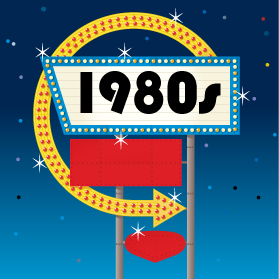1982: The first emoticon
- Scott Fahlman proposes using :-) after a joke, rather than the original -) proposed by Kevin MacKenzie in 1979. The modern emoticon was born.
1983: Arpanet computers switch over to TCP/IP
- January 1, 1983 was the deadline for Arpanet computers to switch over to the TCP/IP protocols. A few hundred computers were affected by the switch.
1984: Domain Name System (DNS)
- The domain name system is established along with the first Domain Name Servers (DNS) by Paul Mockapetris to translate names into IP numbers and email control is established. DNS servers allow Internet users to type in an easy-to-remember domain name and then convert it to the IP address automatically.
1985: Virtual communities
- Stewart Brand and Larry Brilliant develop The WELL (short for Whole Earth ‘Lectronic Link), one of the oldest virtual communities still in operation.
1986: Protocol wars
- The Protocol wars begin. European countries are pursuing the Open Systems Interconnection (OSI), while the United States is using the Internet/Arpanet protocol, which eventually wins out.
1987: The Internet grows
- Nearly 30,000 hosts on the Internet. The original Arpanet protocol had been limited to 1,000 hosts, but the adoption of the TCP/IP standard makes larger numbers of hosts possible.
1989: AOL is launched
- Apple pulls out of the AppleLink program. The project is renamed America Online. AOL, still in existence today, makes the Internet popular amongst the average internet users.
1989: The proposal for the World Wide Web
- Tim Berners-Lee proposes the World Wide Web, originally called "Mesh, in the March issue of MacWorld to persuade CERN that a global hypertext system was in CERN’s best interest.

